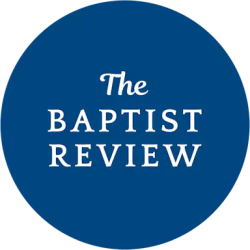The 2013 SBC Annual Meeting in Houston was the first time I heard Danny Akin refer to himself as a “child” of the Conservative Resurgence. By this he meant that he had been around the SBC for the CR, but wasn’t mature enough to play a major role in it like others. As time passes on, many of our leaders could fit that designation, and even more could be called "grandchildren" of the CR, knowing all the stories about it but not there when it happened.
Anyone who has studied genealogy knows that the further you get away from the source, the muddier the relationships get. There are cousins twice removed and families who split up or remarry. You might find people that you are related to in some way, but you don’t feel like you have much in common with them. When you study Baptist history you get much of the same thing: people who claim common ancestry but feel like they are worlds apart otherwise.
Those muddled relationships don't stop any number of people from claiming to represent “the true Southern Baptist.” In almost every situation it works out that the “true Southern Baptist” agrees exactly with this person's theology and identity. How exactly does one determine what is a true southern Baptist in a convention as diverse as ours? Who can claim to be the heirs of not only the Conservative Resurgence, but Hobbs, Mullins, Scarborough, Boyce, Broadus, and all the others?
Many will point to the votes at the annual meeting to prove that things are on their side. Yet history shows that over time, the SBC has been split on any number of issues. During the Conservative Resurgence, moderates often contended that the votes at the annual convention did not represent true Southern Baptists views, because the fundamentalists used “precinct style” get-out-the-vote campaigns. Historian David Morgan noted that it is more likely that the fundamentalists did have the numbers, in part due to rising fundamentalism across the nation.
Morgan also notes that on the other hand, the fundamentalist claim that 90% of Southern Baptists agreed with them was “hardly more than wishful thinking.” Instead, he posits that the votes at the annual meetings, which often split along 60/40 lines, were fairly representative of Convention sentiments overall.
An examination of the votes for president during the CR support some of Morgan’s views. From 1979 to 1994, the percentage of victory for presidents was only above 60 twice (Bailey Smith in 1981 with 60.24% and Morris Chapman in 1991 with 62.05%). Excluding Bailey Smith and Jimmy Draper running for reelection unopposed in 1981 and 1983, the remaining presidential votes in that era were between 50-55% five times and between 55-60% seven times. This divide can also be seen in other significant votes during that time. The 1988 Resolution On the Priesthood of the Believer passed on a slim vote by hand raised ballot, and was so close that SBC parliamentarian Barry McCarty explained the controversial ruling at length to the messengers, and the 1984 Resolution On the Ordination of Women by 58%.
From 1995-2003, presidential votes were all uncontested. But after that, the presidential election result started looking similar to the votes during the Conservative Resurgence. From 2006 to 2017, no SBC president won on a first ballot by more than 55%, excluding Fred Luter, who ran unopposed twice. During that time most presidents were also awarded a second term by acclamation. The following years, the numbers were still not much higher. JD Greear won by 68% in 2018, Ed Litton by 52% in 2021, and Bart Barber won by 60% in 2022 and 68% in 2023. Even this past year, Clint Pressley won by 56%.
Morgan's position on the split of the SBC during the Conservative Resurgence seems to hold mostly true even after the CR. If we are able to find the “real” SBC solely through the vote of the convention, then it would seem on most issues the messengers are still divided, even though today the divide is probably along different ideological lines.
Most everyone would like to claim that the real SBC is on their side, but history shows that it's not that simple, at least when it comes to some issues. On other issues the SBC has clearly spoken, such as voting with 90% to remove churches with women pastors, consistently and overwhelmingly voting against abortion, and voting on the importance of working to prevent abuse within our churches.
In the landscape of the Southern Baptist Convention, the quest to define the “true Southern Baptist” remains a contentious and elusive endeavor. History reveals that the SBC has always been a tapestry of diverse beliefs and perspectives. The Conservative Resurgence was a pivotal season, but even during its peak, the denomination was far from monolithic. The split in voting patterns during presidential elections and key resolutions during that time and over the next decades underscores the complexity and nuance within the SBC. It reminds us that a single vote on a specific topic, or even a specific leader's victory, does not encapsulate the entirety of Southern Baptist identity.
Our convention is in little danger of being crushed by outside liberal forces, thanks to those in the CR who ensured that we would stand on the foundation of the inerrant Scripture. Today, however, the SBC is in danger of being torn apart by internal forces. The very differences that make us strong also threaten to pull us apart. Working with a diverse denomination means being willing to give others the benefit of the doubt, a trait not often found in today's climate. This diverse view of opinions is not a problem to be solved, as if we have to get it out of the way to get to the “real SBC.” Instead it's a reason to celebrate the work that God has done to bring us together and use our shared cooperation for the furtherance of the gospel.
Ultimately, the strength of the Southern Baptist Convention lies in its ability to navigate these differences while maintaining a shared commitment to core beliefs. As new generations of leaders emerge, they bring fresh perspectives and leadership, further enriching the convention's heritage. Who is the real SBC? The only thing we can state with any certainty is that the real SBC is those who show up and make decisions. For at least the past generation, that SBC has stood firm for what matters most: the spread of the gospel to the nations.
Editor's Note: As a part of its commitment to fostering conversation within the Southern Baptist Convention, the Baptist Review may publish editorials that espouse viewpoints that are not necessarily shared by the TBR team or other contributors. We welcome submissions for responses and rebuttals to any editorials as we seek to host meaningful conversations about the present and future of our convention.


